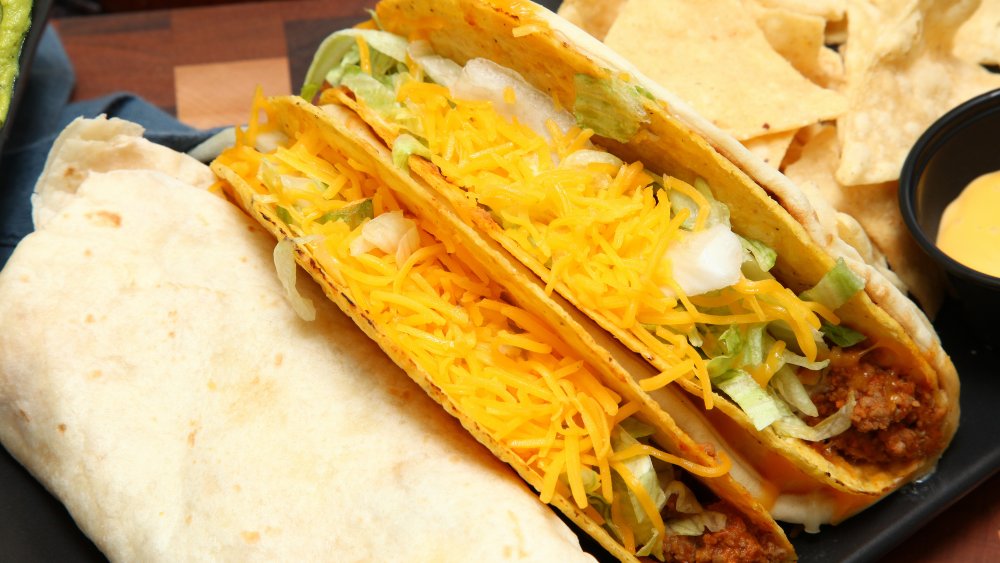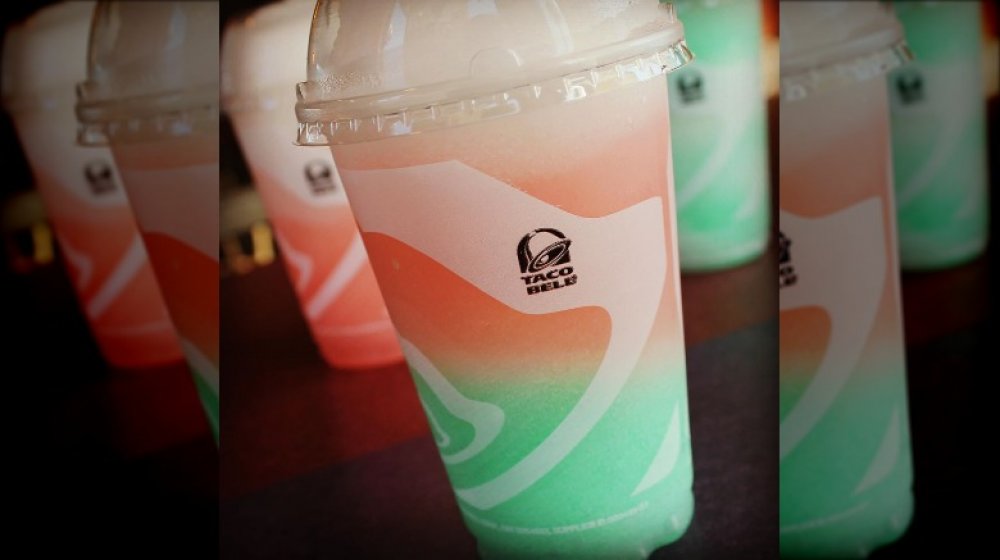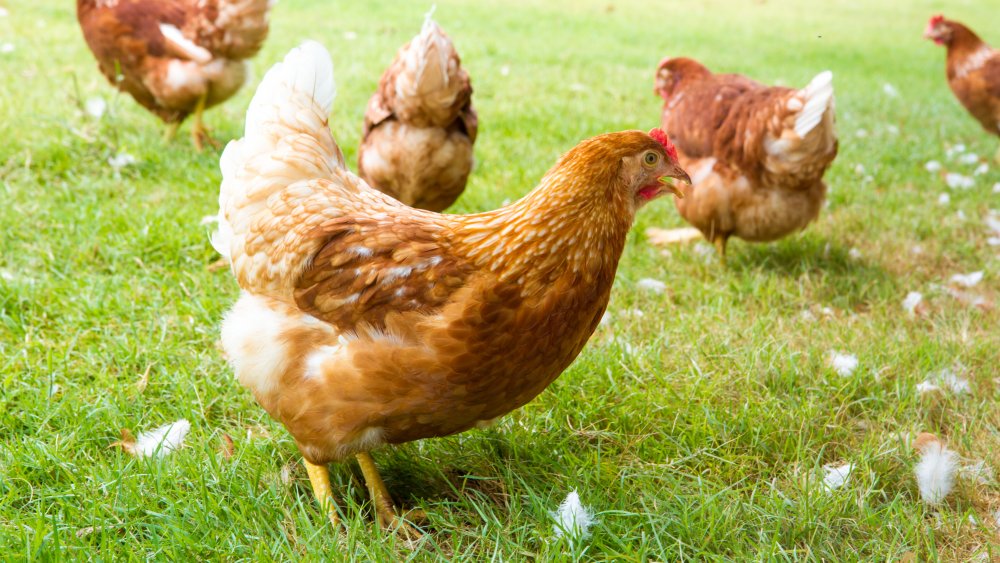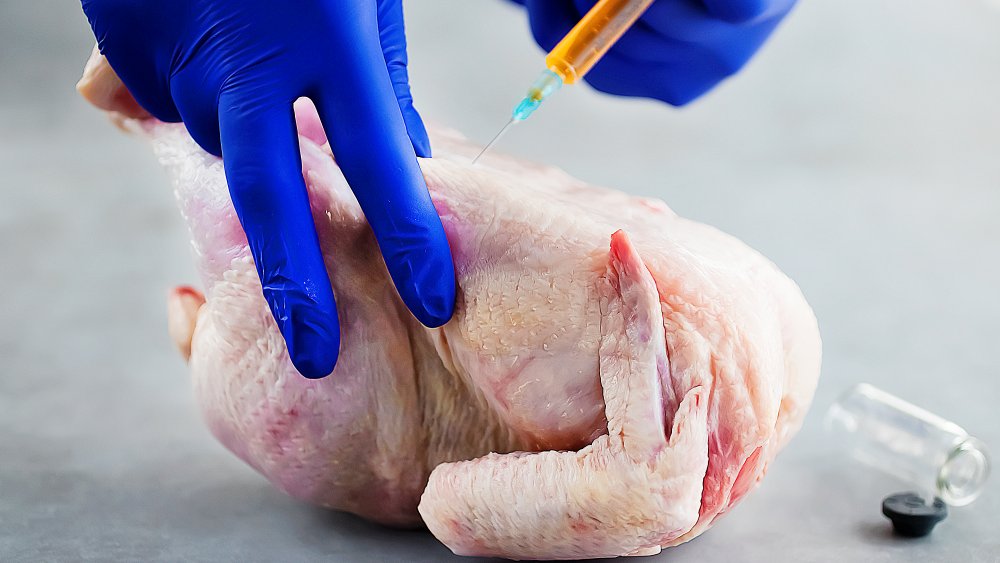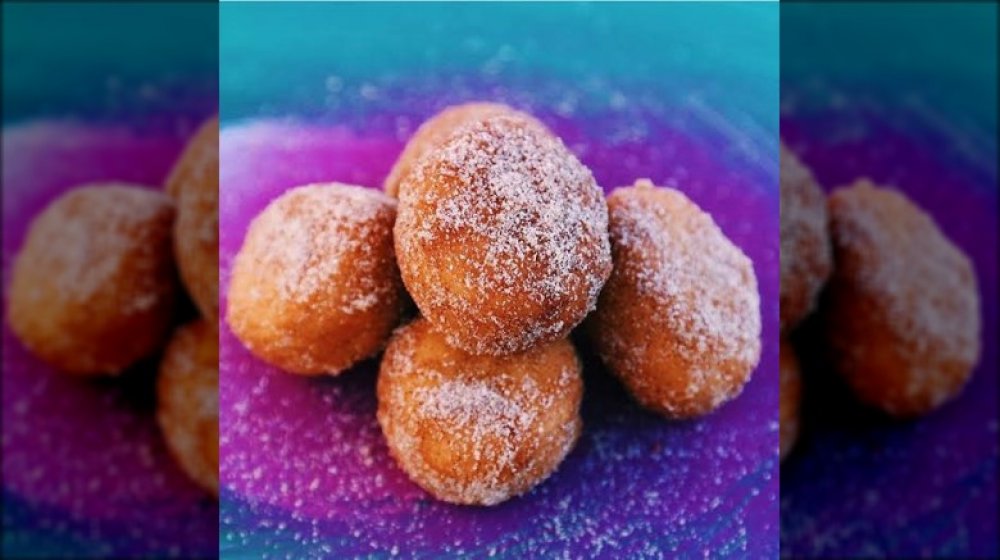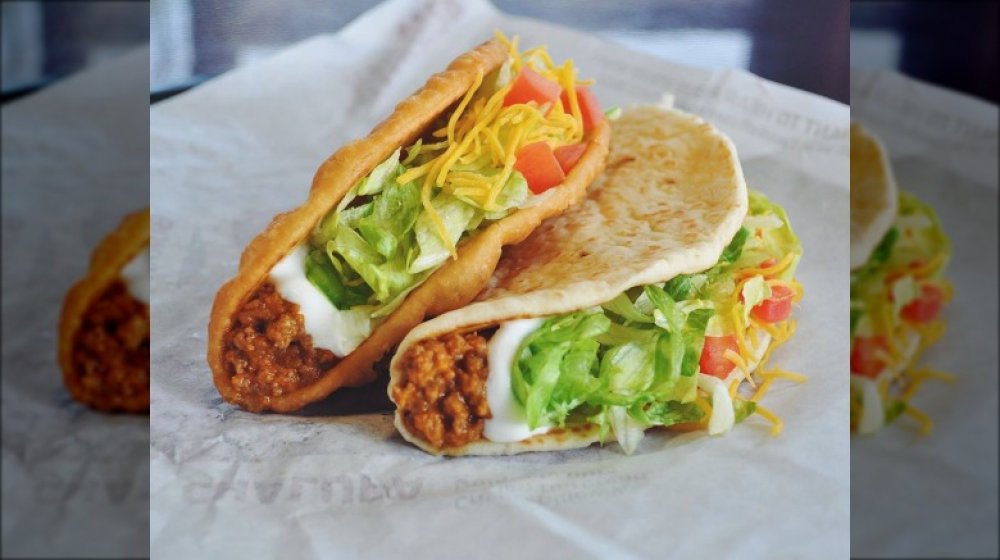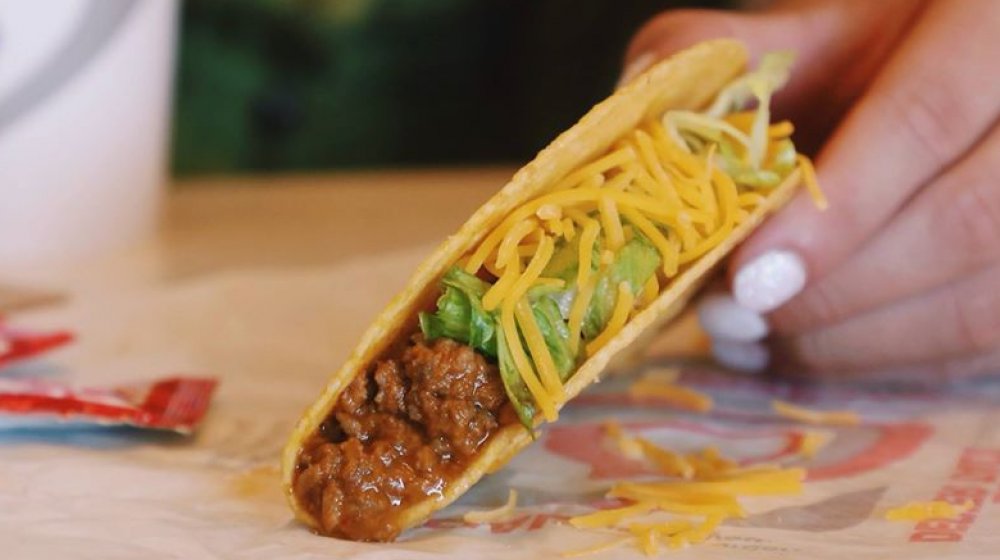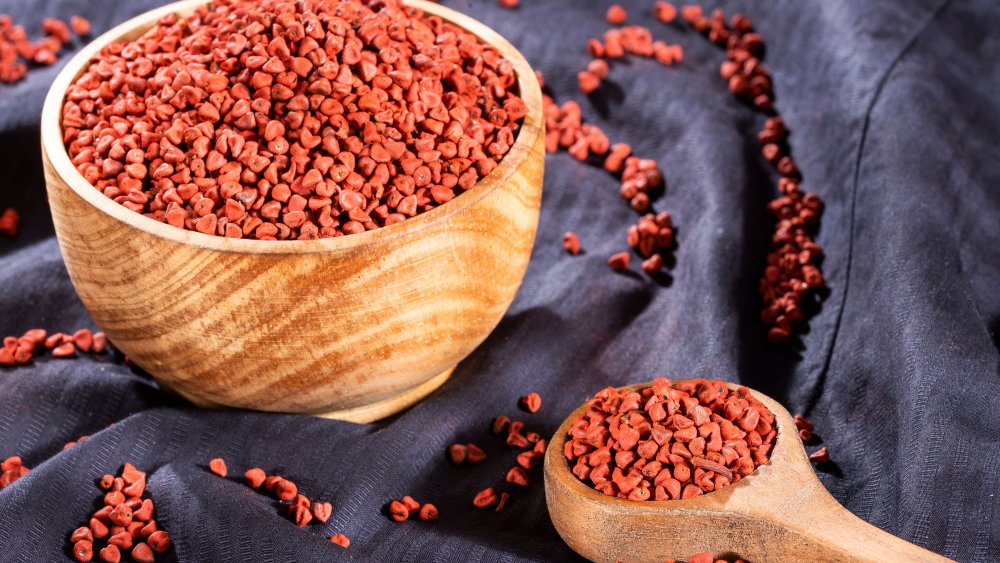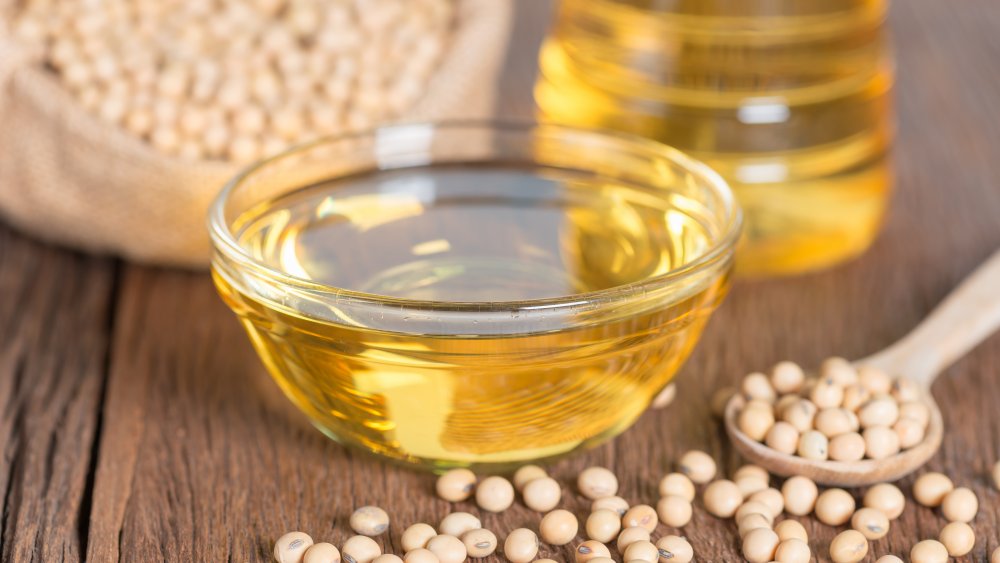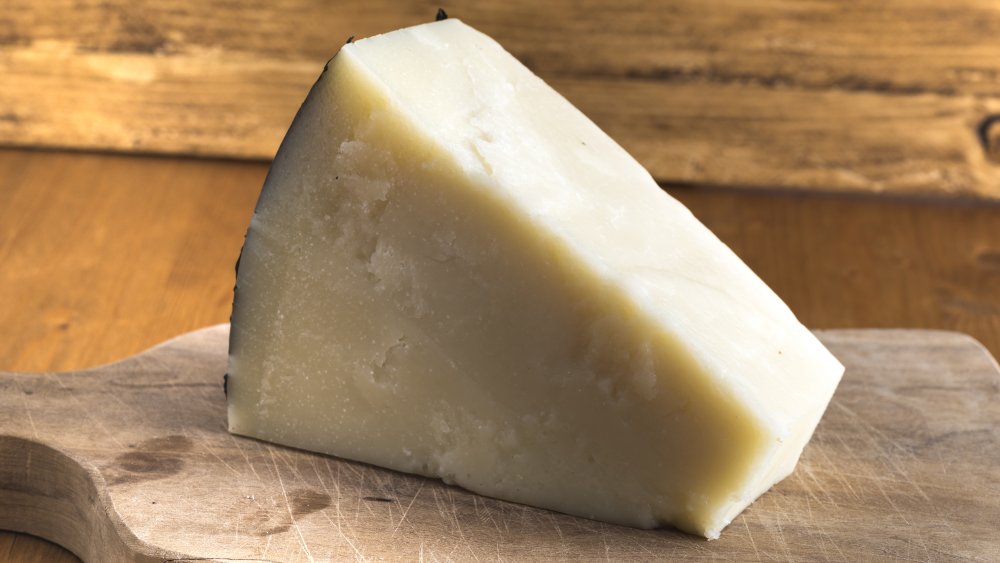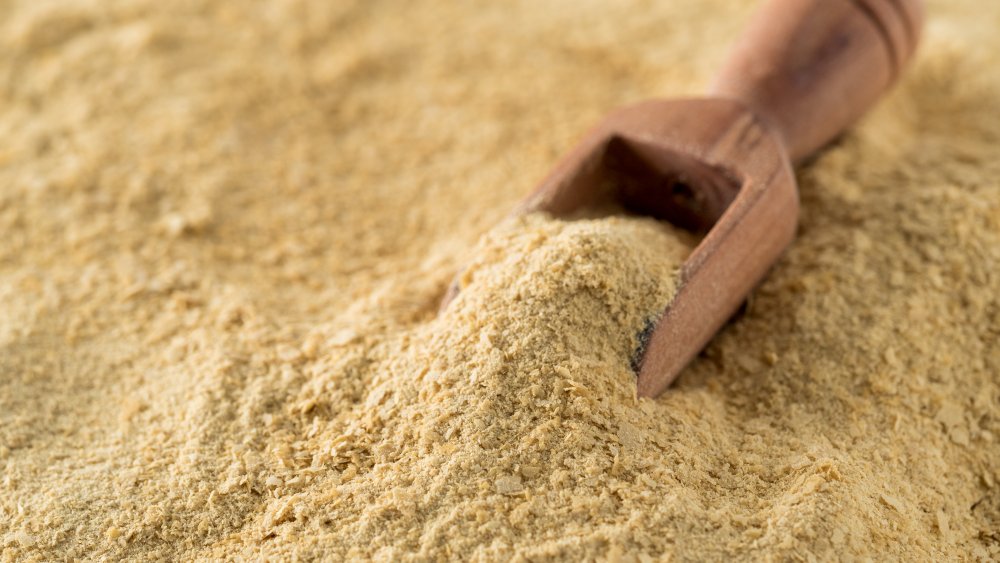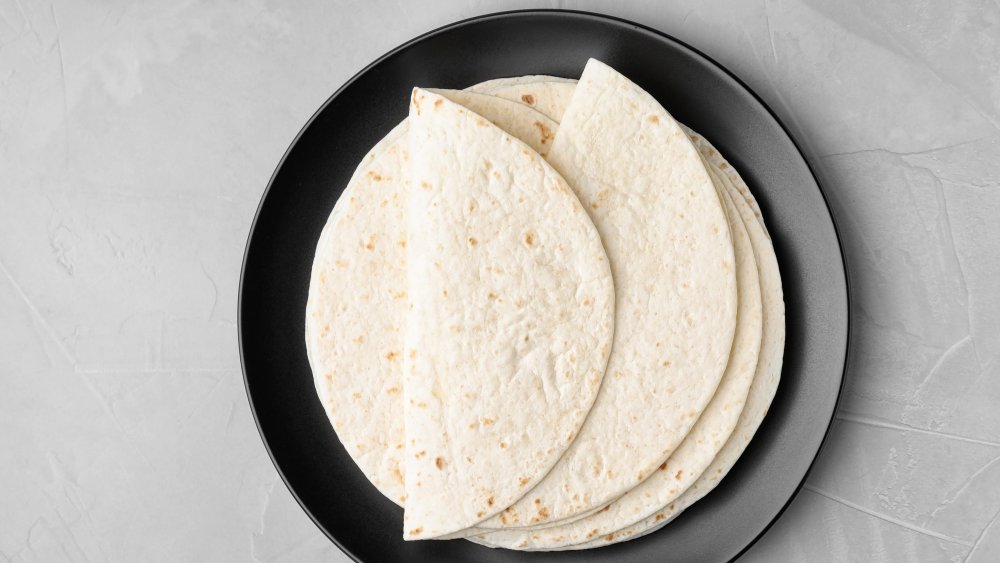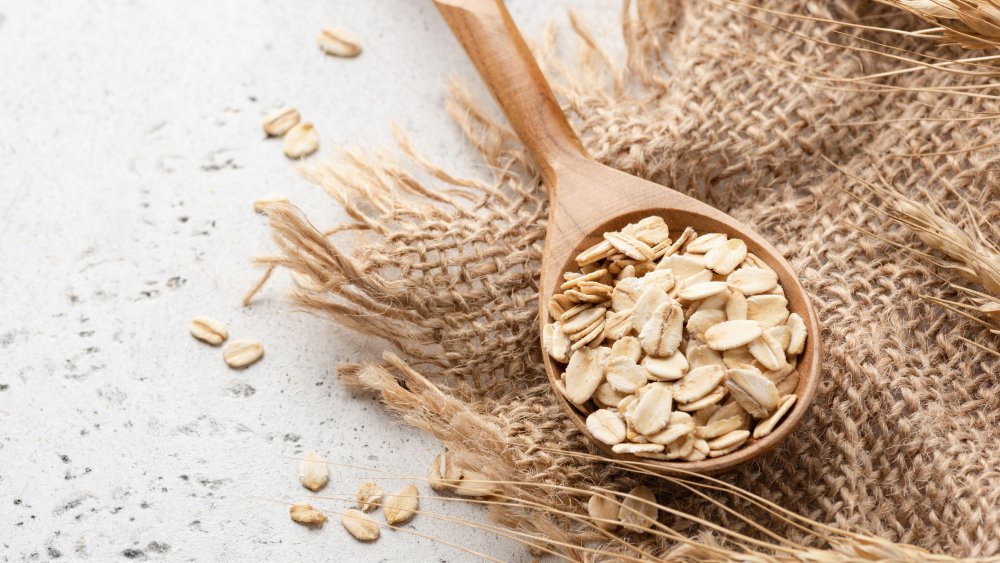What You're Really Eating When You Order Taco Bell
It's hard to resist the call of the drive-thru, especially after watching endless commercials for Taco Bell's Crunchwrap Supreme or their strangely mouthwatering Taco Bell breakfast items. But what are you really eating when you order Taco Bell?
The chain has come under scrutiny in the past, like when everyone was wondering what was the truth about Taco Bell's seasoned beef, so we thought we'd take a closer look at the ingredients they use to make your favorite fast foods.
Some of the ingredients surprised us in a good way, while others left us with a bad taste in our mouth. Why do they still use high fructose corn syrup in some of their drinks? And who knew that they only use cage-free eggs these day? Good or bad, we feel like we can make more responsible choices about the items we order at Taco Bell now that we know which ingredients they use to make their food.
Some drinks at Taco Bell contain high fructose corn syrup
Those who are already wary of Taco Bell might not be surprised to hear that they use high fructose corn syrup in several of their menu items (via Taco Bell), but those who have been following the chain's progress over the years might be surprised.
That's because, in 2015 they announced that they would be removing high fructose corn syrup from most of their foods at the end of that year (via Buzzfeed News).
So why does is still show up when looking at their ingredients lists?
It turns out that Taco Bell does still use high fructose corn syrup in their beverages and their co-branded items. That means their sodas and frozen drinks, depending on your order, may still contain high fructose corn syrup, as may their co-branded items that are made with products from other brands, like their Strawberry Skittles Freeze and Airhead Blue Raspberry Freeze.
There's still some disagreement about just how bad high fructose corn syrup really is for you. High fructose corn syrup is similar chemically to refined white table sugar, but there has been a correlation with increased use of high fructose corn syrup in foods and metabolic health problems. However, there isn't much evidence to show that high fructose corn syrup is worse for you than other types of refined sugar, so if you want to avoid health problems that come with eating too much sugar, you should make sure you only get 10 percent of your daily calories from added sugar.
Taco bell uses cage-free eggs
Fast food breakfasts aren't exactly healthy, but there is something in Taco Bell's breakfast foods that you can feel good about. That's because, in 2015, Taco Bell joined a slew of other restaurants and announced that it would start exclusively serving cage-free eggs by the end of 2016 (via Taco Bell).
Cage-free eggs aren't necessarily healthier for humans, but according to the Humane Society of the United States, Taco Bell's switch meant that 500,000 hens each year would see their conditions improving.
That's because when hens live cage-free, they're able to engage in more of their natural, instinctive animal behaviors, like spreading their wings, getting exercise, nesting, and perching.
Burger King and Au Bon Pain have already made the switch to using cage-free eggs as well, while other major chains are still working on changing over to cage-free suppliers (via Fast Food Menu Prices).
McDonald's and Dunkin' plan to go cage-free by 2025, and Starbucks plans to get their by 2020. In the meantime, you can get your cage-free egg fix at Taco Bell.
Taco Bell's chicken is antibiotic-free
Taco Bell's progressive poultry policies extend beyond their commitment to using cage-free eggs. In 2016, they announced that in 2017, they would cease using chicken from suppliers that treat their animals with medically important antibiotics (via U.S. PIRG).
Other chains, like McDonald's and Subway, also eschew chickens raised on antibiotics.
Taco Bell's sister companies Pizza Hut and KFC, which are also owned by Yum! Brands, joined the chain, Pizza Hut removing antibiotic-raised chicken from its menu in 2017, and KFC following suit in 2019 (via Yum! Brands).
Why is it important for these restaurants to serve chicken raised without medically important antibiotics?
According to the CDC, the overuse and misuse of antibiotics is a full-blown public health crisis. That's because using too many antibiotics in our food supply can lead to the development of drug-resistant bacteria that can lead to foodborne illnesses, and it can also create antibiotic-resistant bacteria that cause diseases like tuberculosis and pneumonia, making them harder to treat and more dangerous for those who fall ill (via Eating Well).
Taco Bell adds potassium sorbate to some foods
Taco Bell got a lot of press for making a move toward using more natural ingredients in their foods, so what's with potassium sorbate, which pops up in multiple places on their menu (via Taco Bell)?
Potassium sorbate is a salt derived from sorbic acid. Now, you can find sorbic acid in some natural foods, like mountain ash berries, but for commercial use its made synthetically in a lab (via Honest).
It's used as a preservative. That's because it fights the growth of bacteria and mold in food. It's odorless and tasteless, so it can be used in a variety of foods without altering their flavor, and the FDA recognizes it as safe for use in food (via Healthline).
It's also approved by the Handbook of Green Chemicals, the National Products Association, and Whole Foods Premium Body Care, so as far as artificial or synthetic preservatives go, it has a pretty good reputation.
Taco Bell uses potassium sorbate in dozens of items on their menu, from their Cinnabon Delights to their avocado ranch sauce.
Almost all evidence seems to point to potassium sorbate being a safe food additive. However, there are two studies that show a very low potential for potassium sorbate to cause damage to human DNA (via Fooducate).
You'll find vital wheat gluten in some Taco Bell bread products
Vegetarians may be familiar with vital wheat gluten, which is present in many meatless "meat" alternatives, like seitan. But why would Taco Bell need to use vital wheat gluten in its food?
Vital wheat gluten is derived from wheat flour. Basically, it's made by hydrating flour, which causes the gluten to activate, then removing everything but the gluten, which is then dried and ground. Gluten is what provides structure to baked goods. You wouldn't bake a loaf of bread with vital wheat gluten and no flour, but you can add vital wheat gluten to bread doughs to make them more elastic and chewy (via The Kitchn).
Taco Bell uses vital wheat gluten in a couple of their bread products.
It's used to make their Chalupa shells, flour tortillas, and Gordita flatbread (via Taco Bell). Think of how annoying it is to be eating a taco or burrito and having the tortilla rip or the shell break — the vital wheat gluten can help strengthen the structure and elasticity of these products, so you can eat lunch in your car without getting ground beef on your work pants.
Taco Bell uses real cheddar cheese (with one add-in)
The shredded yellow cheese on top of your taco, melted in your Quesarito, and stuffed in your burrito is in fact good old cheddar cheese. Cheddar cheese is also used in Taco Bell's Doritos Locos taco nacho cheese shell.
The ingredient list for Taco Bell's cheddar cheese is short and simple (via Taco Bell). There's cheddar cheese, and anti-caking agent. But what's that?
Anti-caking agents are used to keep ingredients from fusing together. They can be found in things like baking soda, powdered sugar, and, yes, cheese (via Food Insight).
Cellulose is often used as an anti-caking agent for cheese. It stops the cheese, whether grated or shredded, from fusing back into a solid block or clump.
Cellulose is usually made of wood pulp. It's a fine powder, and the FDA allows cheese products to contain up to four percent wood pulp, though the average is one percent (via Eater).
The FDA has rated anti-caking agents as GRAS, or "Generally Recognized as Safe."
Taco Bell uses annatto for coloring
Taco Bell revamped its ingredient list in 2015, announcing that they would be removing all artificial colors from their menu items (via Buzzfeed News).
But several of their ingredients, including their cheddar cheese, Doritos Locos taco nacho cheese shells, nacho cheese sauce, red tortilla strips, and three cheese blend, have a bright color. That's because Taco Bell switched from artificial colors to annatto (via Taco Bell).
Annatto is a type of seed that comes from the achiote, a type of evergreen tree from South America. Each tree grows prickly pods, and within it are several red seeds. When cooked, this annatto gives foods a yellow or orange color. It's been used in traditional Central, South America, and Caribbean dishes for hundreds of years, and now it's used as a natural alternative to artificial colorings (via Formaggio Kitchen).
You can buy annatto seeds whole, or buy them ground as powdered achiote. They have a mild, earthy flavor, but are mostly used to simply color dishes (via Smithsonian).
Taco Bell uses annatto to color their cheese products and red tortilla chips, a natural way to give their food the bright, fast food hues we've come to expect from the chain.
Taco Bell cooks with soybean oil
Soybean oil pops up frequently on Taco Bell's menu, in everything from their sauces and Chalupa shells to their Cinnabon Delights and scrambled eggs (via Taco Bell).
As far as oils go, soybean is a fairly healthy choice. It's mostly made of polyunsaturated fats, is rich in Vitamin K, and contains Omega-3 fatty acids (via Healthline).
It's versatile when used in foods, because it has a mild taste and a high smoke point that can stand up to high-heat cooking.
Refined soybean oil is also, surprisingly, safe for most people with soy allergies to consume (via Kids With Food Allergies). That's because when the oil is refined, the proteins that trigger the allergic reactions are removed.
Taco Bell used to use partially hydrogenated soybean oil to fry their foods, but that contained trans fats. They switched to using canola oil in their deep fryers in 2006 (via Los Angeles Times).
There are some people who think that soybean oil isn't as healthy as it's made out to be. They point to concerns over its high linoleic acid content and possible correlation with metabolic diseases like diabetes (via Perfect Keto). However, these folks seem to be in the minority, and the vast majority of research points to soybean oil as being relatively healthy, and safe to consume.
You'll find Romano cheese in one popular Taco Bell item
When we think of Taco Bell's cheesiest products, we tend to think of their nacho cheese sauce and their shredded cheddar cheese. But there's another type of cheese on their menu that lends a specific flavor to one of their most iconic products.
Romano cheese is used to make their Doritos Locos nacho cheese taco shells (via Taco Bell). It's also an ingredient in nacho cheese flavored Doritos chips (via Doritos). But what exactly is Romano cheese, which is apparently a key ingredient in giving nacho cheese Doritos their signature flavor?
Romano cheese is a hard cheese that originated in Italy. It has a sharp flavor that's similar to Parmesan, though it's said to be stronger and saltier, which makes sense to anyone whose tasted the cheesy blast of a Doritos Locos taco shell (via Delco Foods).
There are three different kinds of Romano cheese. Vaccino Romano is made with cow's milk, Caprino Romano is made with goat's milk, and Pecorino Romano is made with sheep's milk. Taco Bell doesn't specify which type of Romano cheese it uses, but assuming that they're using cost-effective domestic Romano instead of stuff imported from Italy, chances are it's Vacchino Romano. They also use cheddar cheese and powdered buttermilk to round out the flavors of the Doritos Locos taco shell.
Taco Bell uses torula yeast
You may be most familiar with yeast as an ingredient that makes bread rise, but it can be used as a flavoring agent, too. In fact, Taco Bell includes torula yeast in several of its menu items (via Taco Bell). It's an ingredient in their fire grilled chicken, red sauce, sausage crumbles, seasoned beef, seasoned rice, and shredded chicken.
Torula yeast is actually a byproduct of the paper industry (via The Spruce). It's a yeast that grows on wood alcohols, which is then dried and sold as a food additive.
Torula yeast has a savory, smoky, "meaty" flavor. It's inactive, so you can't use it to bake breads, but it can be used to enhance the umami of other foods. For instance, Taco Bell's seasoned rice is vegetarian, but it has a savory flavor that one might usually associate with rice made with chicken broth.
The yeast is also a good substitute for MSG. It's rich in glutamic acid, but doesn't have the same cultural baggage that MSG seems to carry with it (via Extra Crispy). It's a flavor enhancer that's more in line with Taco Bell's move toward more natural ingredients (via Buzzfeed News).
Taco bell makes use of dough conditioner
You're probably familiar with hair conditioner, and chances are you know a thing or two about dough, but have you ever heard of dough conditioner? We came upon this ingredient when looking closely at Taco Bell's menu (via Taco Bell).
Dough conditioner can be found in several of their flour-based food items, including Chalupa shells, flour tortillas, and Gordita flatbread.
You might not be able to find dough conditioner in the baking aisle of your local grocery store, but if you're serious about baking you can try getting some online or at a specialty shop — some bakers swear that it makes all the difference with their homemade loaves of bread (The Fresh Loaf). It can improve the texture of dense home-baked loaves so that they're lighter and fluffier, more like their store bought counterparts.
Commercially, dough conditioners are used for a multitude of reasons. They can be used to help yeast work more effectively, to help breads have a more uniform texture, to increase elasticity and chew, to encourage the development of gluten, and some can help prevent bread from going stale for an extended period of time (via Prepared Pantry).
These are all things that make sense for Taco Bell, trying to mass-produce uniform tortillas and Chalupa shells that don't tear or shatter as soon as they're filled with ingredients. It also makes for products that are easier to keep on hand for long periods of time without them turning stale.
Taco Bell uses oats in a surprising way
Taco Bell has faced several controversies over their seasoned ground beef, most of which — rumors that they used mealworms as filler, or that they used (fictional) Grade D beef — turned out to be completely false.
They were also once sued by a law firm that claimed their seasoned beef only contained 36 percent beef, but that also turned out not to be true.
In fact, Taco Bell's seasoned beef recipe is made up of 88 percent beef (via Syracuse). The other 12 percent of ingredients include seasonings like chili pepper, torula yeast, and cocoa (via Taco Bell). But curiously, Taco Bell's seasoned beef also contains oats. Why?
It turns out, the oats are there to help texturize the beef to the chain's preferences (via USA Today). As far as food additives go, oats are pretty healthy. In fact, some recipes for home cooks even swap a portion of the beef called for in dishes like meat loaf and chili with oats to lighten them up, reduce fat, and add fiber (via Washington Post).
Oats aren't the only thing that gives the fast food chain's beef it's signature texture, which is fairly mushy with small crumbles (honestly, it's easier to eat this beef on-the-go than if it were made of looser beef chunks). Soy lecithin and cornstarch are also added to Taco Bell's seasoned beef to improve the texture.
